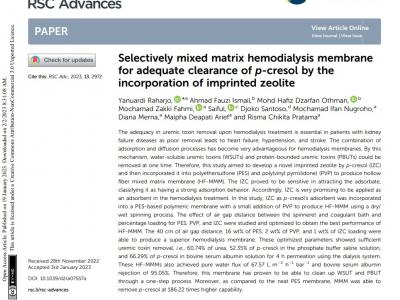Brown Tumour in Chronic Kidney Disease: Revisiting an Old Disease with a New Perspective
- Artikel Ilmiah
- /
- 15/08/2023
- /
- 0

Simple Summary
OFC (Osteitis Fibrosa Cystica) and Brown Tumours, skeletal lesions commonly found in chronic kidney disease (CKD) patients, are influenced by various risk factors, such as age, sex, medications affecting calcium metabolism, and vitamin D deficiency. The primary cause is secondary hyperparathyroidism, leading to imbalances in calcium and phosphorus levels and osteoclast activation. Other factors, like RAAS hyperactivity and chronic inflammation, may also contribute to their development. The recently described involvement of KRAS mutations turned Brown Tumours from reactive lesions to potentially neoplastic lesions. To manage these conditions, pharmacologic treatments like bisphosphonates, calcimimetics, vitamin D supplementation, and denosumab can help by reducing hyperparathyroidism, restoring calcium levels, and preventing OFC occurrence. Brown Tumours, being rare, lack sufficient understanding regarding their manifestation and treatment. However, considering their impact on CKD patients’ quality of life, it is crucial for nephrologists and medical practitioners working with dialysis patients to be aware of various diagnostic and treatment options.
Abstract
Osteitis fibrosa cystica (OFC) and Brown Tumours are two related but distinct types of bone lesions that result from the overactivity of osteoclasts and are most often associated with chronic kidney disease (CKD). Despite their potential consequences, these conditions are poorly understood because of their rare prevalence and variability in their clinical manifestation. Canonically, OFC and Brown Tumours are caused by secondary hyperparathyroidism in CKD. Recent literature showed that multiple factors, such as hyperactivation of the renin–angiotensin–aldosterone system and chronic inflammation, may also contribute to the occurrence of these diseases through osteoclast activation. Moreover, hotspot KRAS mutations were identified in these lesions, placing them in the spectrum of RAS–MAPK-driven neoplasms, which were until recently thought to be reactive lesions. Some risk factors contributed to the occurrence of OFC and Brown Tumours, such as age, gender, comorbidities, and certain medications. The diagnosis of OFC and Brown Tumours includes clinical symptoms involving chronic bone pain and laboratory findings of hyperparathyroidism. In radiological imaging, the X-ray and Computed tomography (CT) scan could show lytic or multi-lobular cystic alterations. Histologically, both lesions are characterized by clustered osteoclasts in a fibrotic hemorrhagic background. Based on the latest understanding of the mechanism of OFC, this review elaborates on the manifestation, diagnosis, and available therapies that can be leveraged to prevent the occurrence of OFC and Brown Tumours.
Keywords: bone tumour; hyperparathyroidism; giant cell; osteoclast; bone neoplasm




